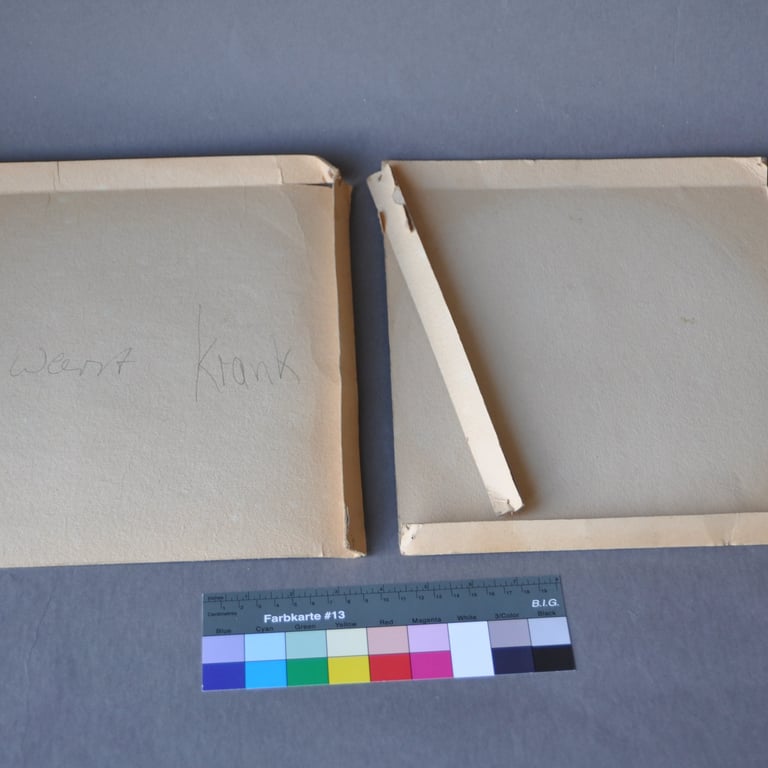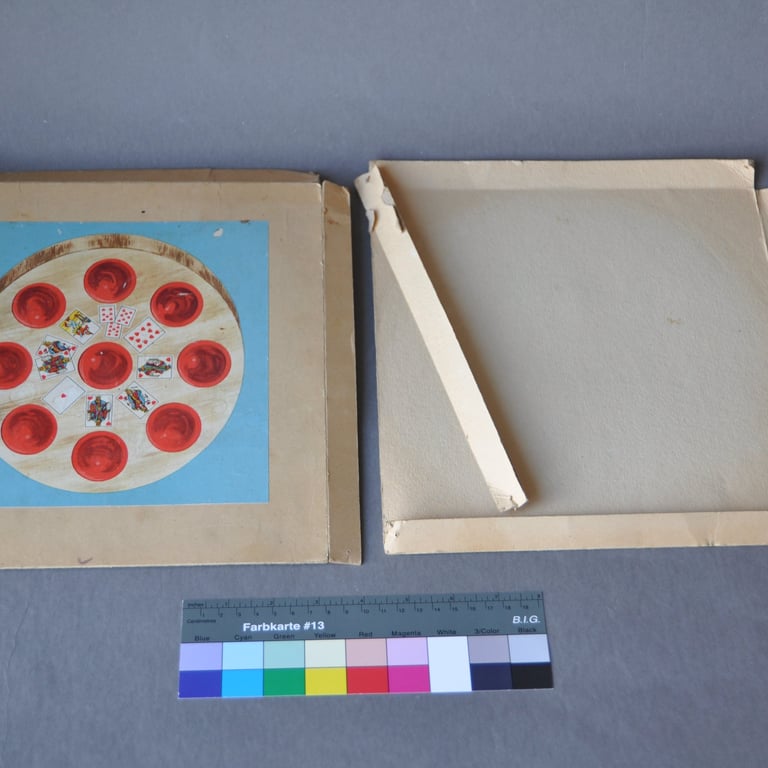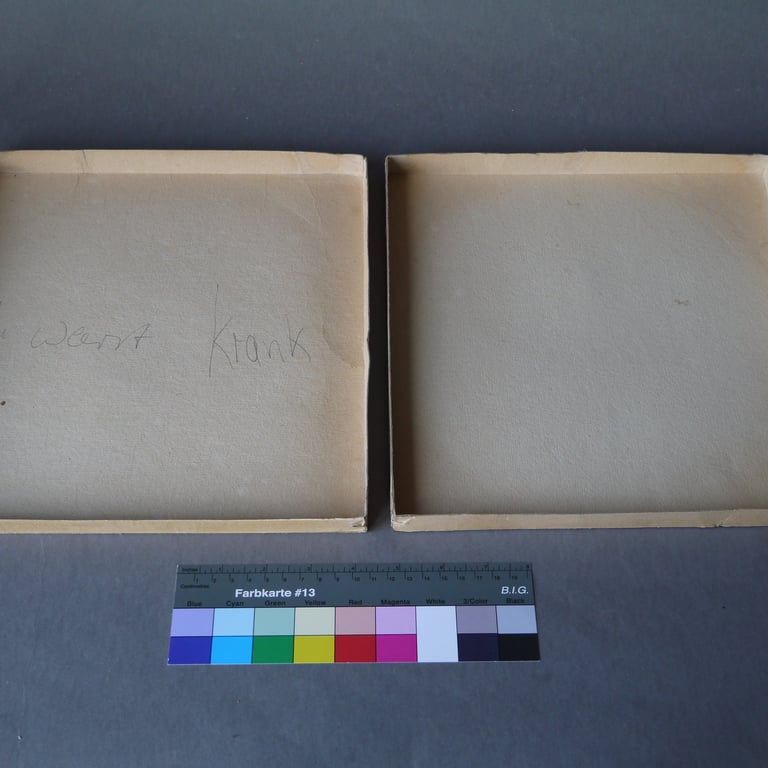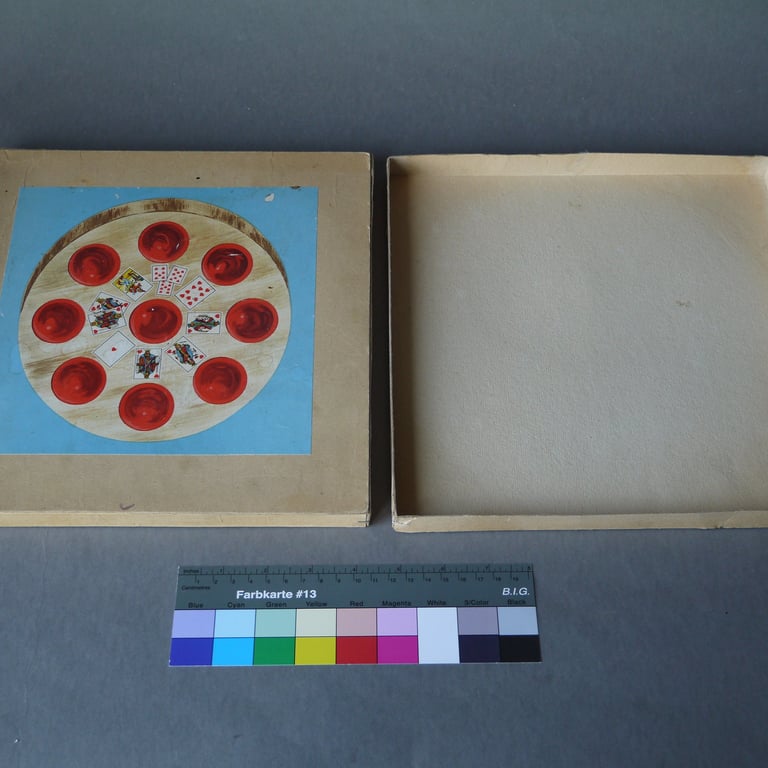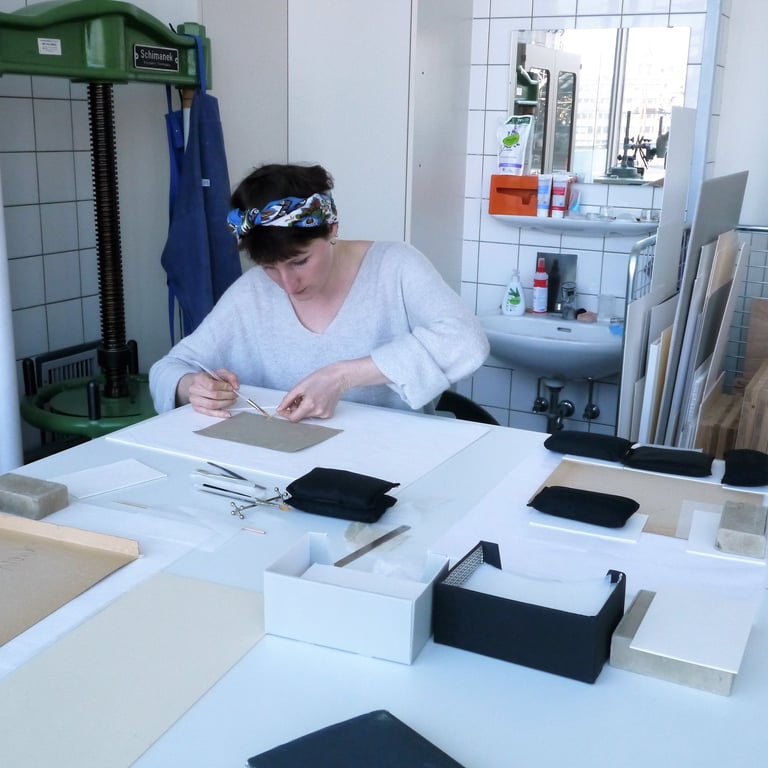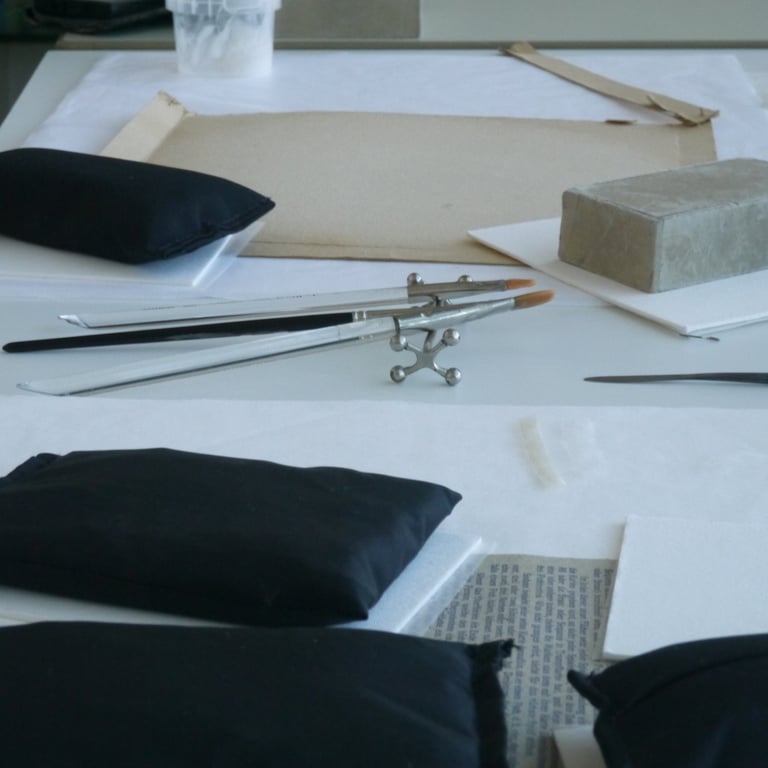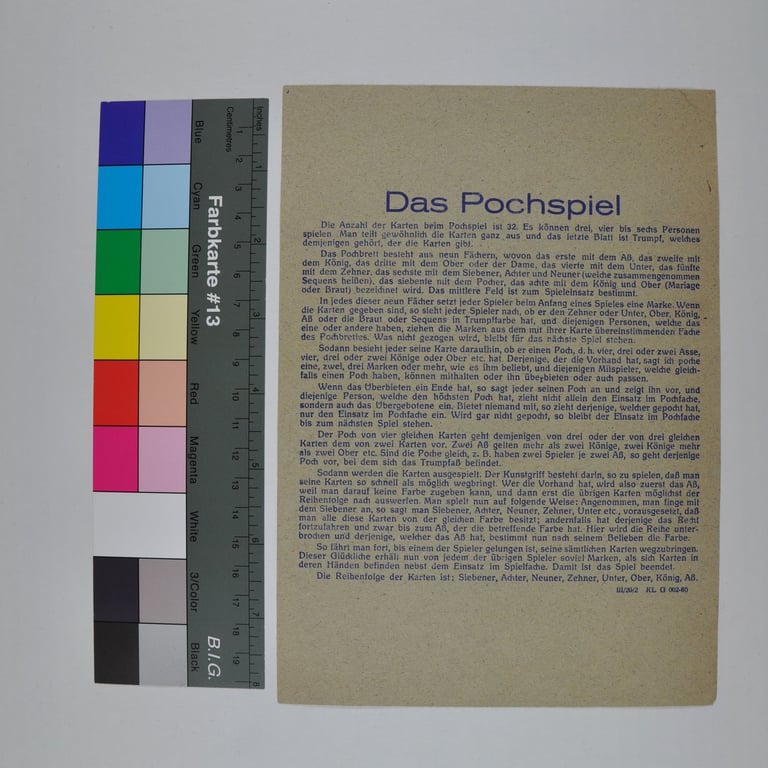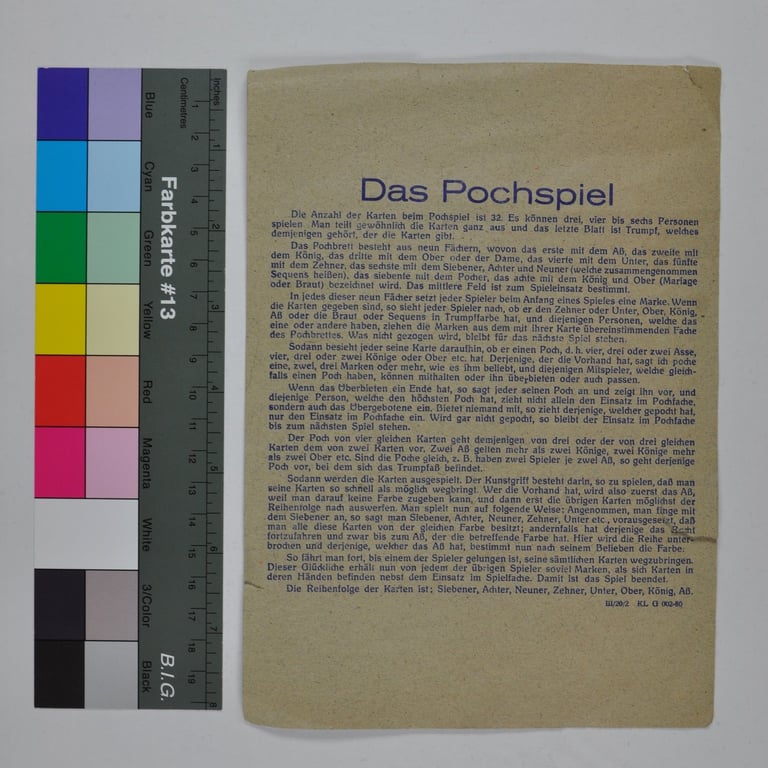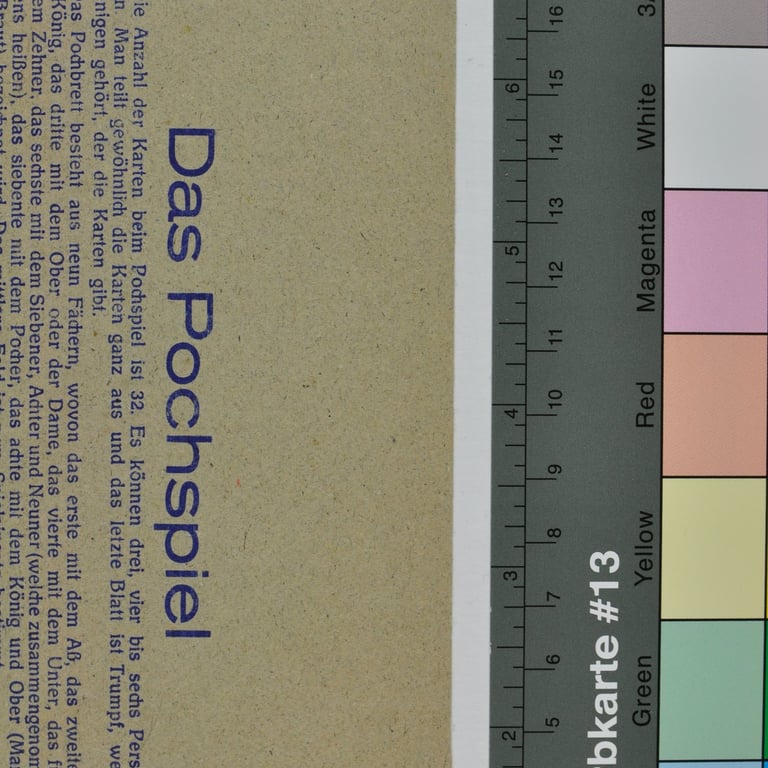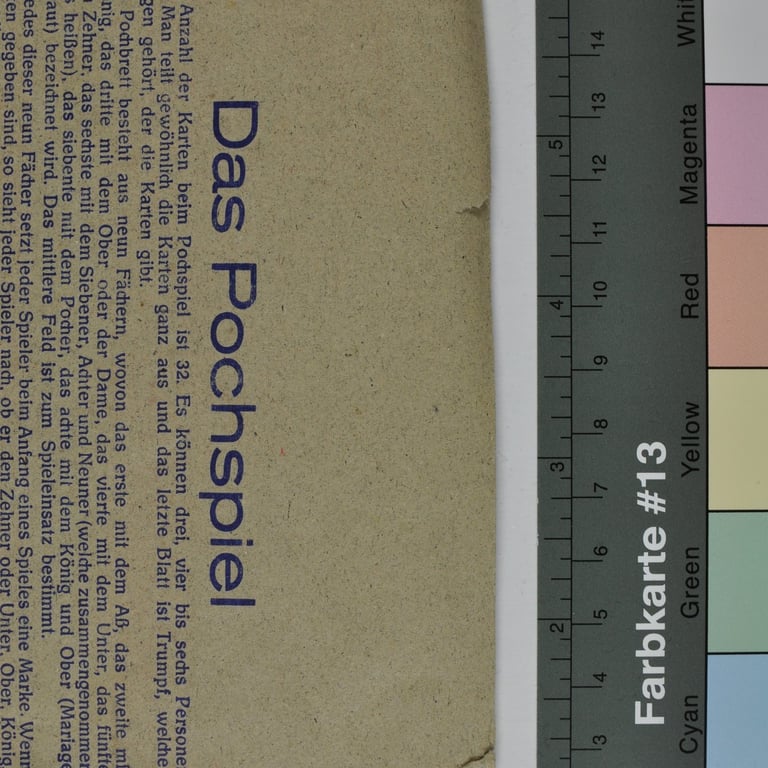The restoration was carried out with the help of Sophia Elze, paper conservator at Museum Ludwig, Köln.
I D E N T I F I C A T I O N
Cardboard box of the German game Poch (or Pochen) from the 1950s, including the rules on A5 paper.
O B J E C T I V E
I wanted to learn more about paper, identification techniques and the restoration of this material. What better way than by using a case study? The aim for this object was to take the first steps in preserving paper and cardboard, cleaning, consolidating folds and flattening.
I N T E R V E N T I O N
After completely dusting off the rules of the game, wheat starch glue was prepared. Wheat starch forms a paste with good adhesive properties, even when diluted heavily, and is reversible, making it perfect for paper restoration. In this case, as the text was only printed on one side, the tears were restored by lining with the glue and Japanese paper of different thicknesses. Once dry, the document was flattened to reduce creasing. To do this, the document was re-moistened and then pressed for several days. I'll leave you to appreciate the result!
As for the games box, a large part of the treatment consisted of consolidating the corners and repairing the tears. Once everything was consolidated, a strip of cardboard was created to replace one of the four missing sides. To get as close as possible to the aesthetics of this 1950s cardboard, the cardboard was covered with a paper with the same weave, tinted with different teas. This process took several days to find the perfect shade to replace the missing part. Finally, the original staples holding the four corners were removed and replaced with new, hand-formed ones.

